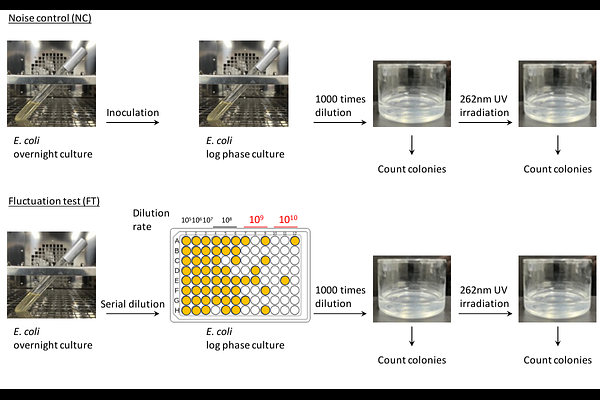Induced tolerance to UV stress drives survival heterogeneity in isogenic E. coli cell populations

Induced tolerance to UV stress drives survival heterogeneity in isogenic E. coli cell populations
Ichikawa, S.; Tanoue, M.; Takeuchi, J.; Matsuo, E.; Shimada, Y.; Singh, A.
AbstractThe emergence of transiently tolerant bacterial subpopulations challenges our understanding of stress tolerance mechanisms. While much is known about antibiotic tolerance, it remains unclear whether similar mechanisms contribute to survival under ultraviolet (UV) stress. Here, we employed a modified Luria-Delbruck fluctuation test to investigate the presence of pre-existing UV-tolerant subpopulations in Escherichia coli. Our results showed no significant evidence of pre-stress UV tolerance. Instead, the data suggest that survival is primarily driven by inducible DNA repair responses activated after UV exposure. Furthermore, sequential low-dose UV exposures yielded higher-than-expected survival, suggesting that transient tolerance can be induced following initial UV exposure, likely through active DNA repair processes. These findings indicate that E. coli survives UV stress via an induced, rather than pre-existing, mechanism of tolerance.